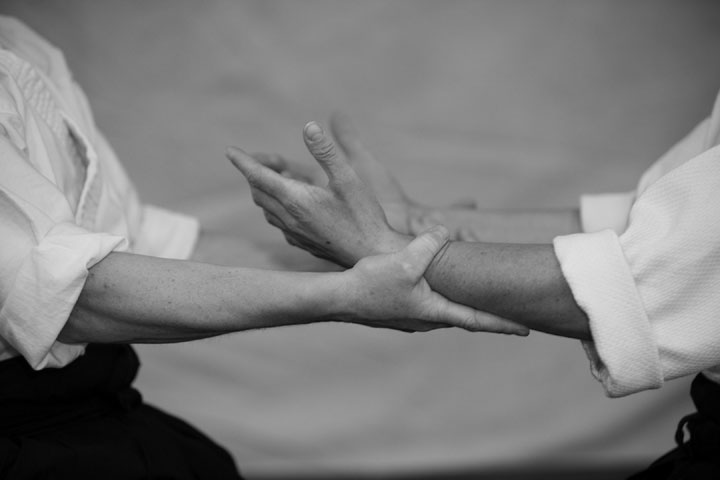
This week I find myself exploring deeply the idea of musubi 結び. I believe musubi 結び is a vital key to higher level aikido and judo exploration.
Aikido Journal defines Musubi 結び as - Knot; tie. The concept of a link between the attacker and defender permitting the smooth execution of techniques.
Before an engagement the aikidoda and the attacker are separate bodies in motion hurling together in a potentially devasting clash of matter and energy trying to occupy the same space. The skillful aikidoka however connects to and blends with the energy hurling towards him. The two individual structures of the human being now become more unified, the two people become one four legged structure. The aikidoka can cause his opponent to need to lean on him for support, so as the aiki man moves, his opponent must follow. The two people often lose their individual centers of gravity and gain a common or shared one. This joining together of the centers is what I consider to be musubi 結び.
Have you ever been working out and someone asks why the attackers in aikido don't just let go? Why do they continue to hold on? The answer friends is the principle of musubi.
As my regular readers may know, I am fond of words and looking at them closely to find deeper meaning.

Here is the modern simplified Chinese form of the character and the ancient form.
to tie / to knot / to weave / a knot / to unite / to join / to connect / to congeal / coagulation / to form / to found / to constitute / to bear fruit / a result / an outcome / to pay, or settle ( as an account, etc. ) / a node
contract;
do up hair;
fasten;
join;
organize;
tie;
The word musubi used in many different sentences
友情が彼らを結びつけた。 Friendship bound them together.
ロープを木に結び付けなさい。 Fasten the rope to the tree.
彼は二つの考えを一つに結び付けた。 He combined two ideas into one.
Here is Mike and I working on the connection aspects of musubi. We go real slow and methodical on this. I hope this illustrates what musubi is to those in search for it.







I've been thinking it would be fun to practice Aikido waza from push hands. It would help us understand Aiki and Musubi and give us a dynamic, but nevertheless controlled, way to practice that's not as chaotic as randori, and therefore easier to understand. Plus, it just looks like fun. But at some point, we do need to knuckle down and do the randori, too.
ReplyDeleteYes I use push hands regularly in my practice. Simply use the release motions (which are musubi practice) and link them together. It is a 3 minute lesson for anyone in Tomiki lineage, and you have a whole different way to explore technique.
ReplyDelete